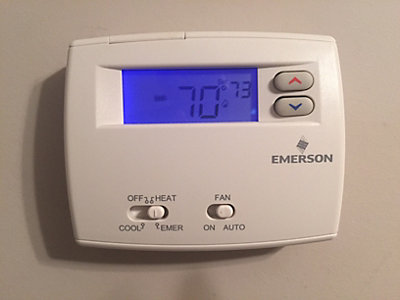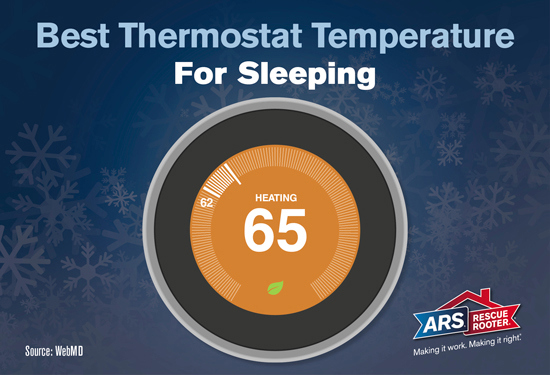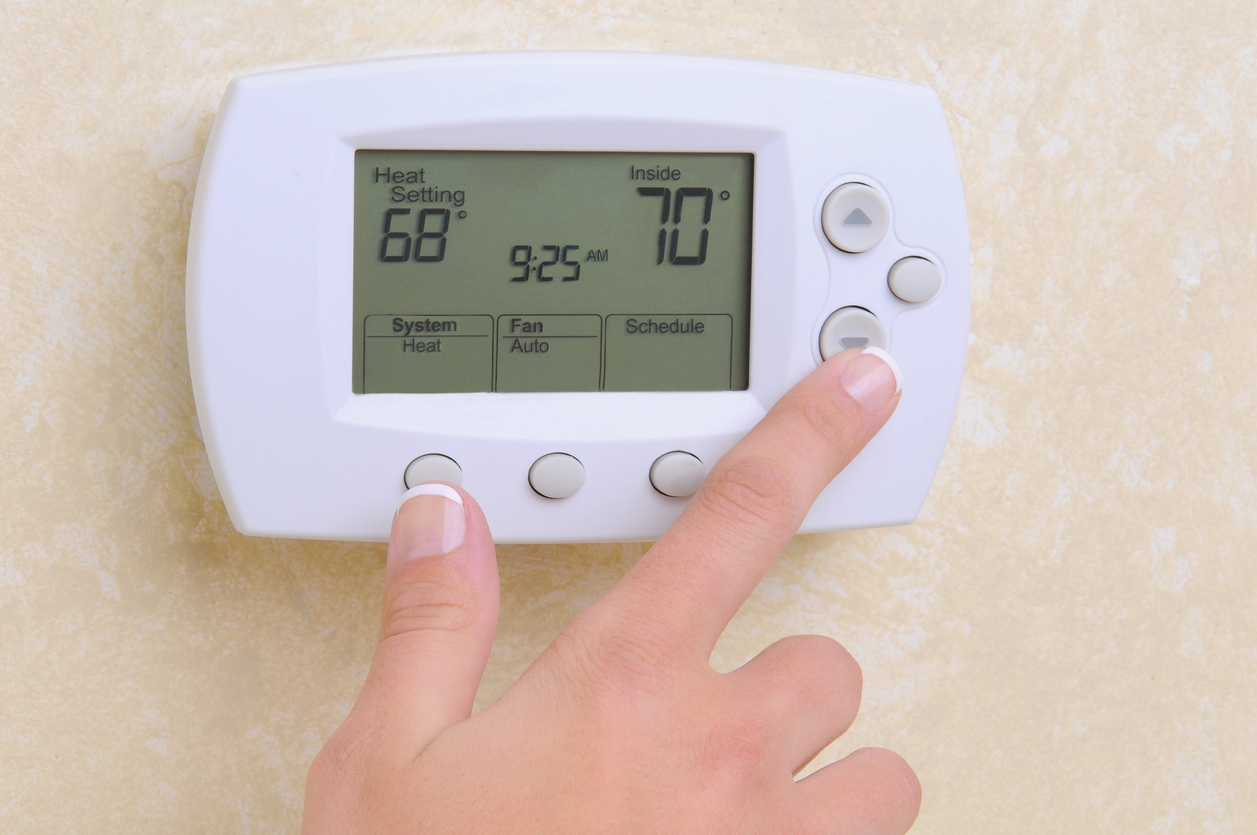Check Best Thermostat Pricing in Amazon
** As an Amazon Associate, I earn from qualifying purchases.
Setting your thermostat in winter can be tricky. What temperature is best?
Many factors influence the ideal thermostat setting. Comfort, energy savings, and even health can play a role. Finding a balance between warmth and cost can be challenging. In this blog post, we will explore the best temperature settings for your home during winter.
We’ll also discuss how to optimize your thermostat for both comfort and efficiency. By understanding these factors, you can keep your home cozy without breaking the bank. So, let’s dive in and find the perfect winter temperature for your thermostat.
Optimal Winter Thermostat Settings
Setting the right thermostat temperature during winter is crucial for your comfort and energy bills. It’s not just about keeping warm; it’s about finding a balance. Let’s dive into the optimal winter thermostat settings that can help you achieve this balance.
Recommended Temperature Range
Experts suggest setting your thermostat between 68°F to 72°F during the day when you’re home. This range keeps your living space comfortable without overworking your heating system.
At night or when you’re away, lowering the temperature to around 60°F to 62°F can save energy. This slight adjustment can make a noticeable difference in your energy bills.
Factors Influencing Settings
Your home’s insulation quality plays a significant role. Well-insulated homes retain heat better, allowing you to set the thermostat lower.
Your personal comfort is key. Some people prefer warmer environments, while others are comfortable at cooler temperatures. Adjust based on your preference.
Consider your daily routine. If you’re out most of the day, there’s no need to keep the home as warm. Smart thermostats can help with this by adjusting settings based on your schedule.
Ever felt a draft in your home? It might be time to check windows and doors for leaks. Fixing these can help maintain your ideal temperature without constantly adjusting the thermostat.
What temperature do you usually set your thermostat to in winter? Have you noticed a difference in your energy bills when you adjust it even slightly? Share your thoughts and experiences!

Credit: plumblineservices.com
Energy Efficiency And Savings
Winter is here, and with it comes the challenge of keeping your home warm without breaking the bank. Setting your thermostat correctly can significantly impact your energy efficiency and savings. But what temperature should you aim for?
Reducing Energy Bills
By setting your thermostat to a lower temperature when you’re asleep or away, you can save a substantial amount on your energy bills. The U.S. Department of Energy suggests setting your thermostat to 68°F while you’re awake and lowering it while you’re asleep or away from home.
Personally, I’ve found that even a 7-10 degree reduction can lower my energy bills by up to 10%. Imagine what you could do with those extra savings! Could it be a family outing or a new gadget? Small adjustments can lead to significant savings.
Sustainable Practices
Lowering your thermostat is not just about saving money. It’s also about adopting sustainable practices. Using less energy means reducing your carbon footprint, which is good for the planet.
You can also layer up with cozy sweaters and warm blankets to stay comfortable without cranking up the heat. This approach is not only eco-friendly but also adds a touch of winter charm to your home. Who doesn’t love a good excuse to snuggle up?
So, what’s stopping you from making these small changes? Start with just a few degrees and see the impact it has. Your wallet and the environment will thank you.
Health And Comfort Considerations
Health and comfort are crucial factors during winter. Setting the thermostat correctly can influence both. The right temperature helps maintain a cozy home. It also prevents health issues related to cold weather.
Ideal Indoor Conditions
The ideal indoor temperature in winter ranges from 68°F to 72°F. This range keeps most people comfortable. It also helps save energy. Adjusting the thermostat slightly at night can improve sleep. A lower temperature while sleeping is often more comfortable.
Wear layers of clothing to stay warm. Use blankets on couches and beds. These small changes can make a big difference. They also help maintain a consistent indoor temperature.
Preventing Common Health Issues
Cold air can cause respiratory problems. Keeping the thermostat set at a steady temperature helps. It prevents the air from getting too cold. This reduces the risk of colds and flu.
Dry air can also be a problem in winter. It can lead to dry skin and irritation. A humidifier can help maintain proper humidity levels. This keeps the air moist and comfortable. It also helps prevent static electricity, which can be annoying.
Proper ventilation is important too. It ensures that fresh air circulates. This reduces the concentration of indoor pollutants. Good air quality is essential for health and comfort.
Smart Thermostat Benefits
When winter rolls around, setting your thermostat to the perfect temperature can be challenging. Smart thermostats, however, offer several benefits that can make this task easier and more efficient. From advanced features to remote control capabilities, these modern devices are designed to keep you comfortable while saving energy and money.
Advanced Features
Smart thermostats come packed with advanced features that enhance your home’s heating efficiency. They learn your daily routine and adjust the temperature accordingly, ensuring optimal comfort when you’re home and energy savings when you’re not.
I remember installing a smart thermostat last winter. It quickly learned that I like my home warmer in the mornings and cooler at night. This automatic adjustment meant I didn’t have to constantly fiddle with the settings.
Some models even provide detailed energy reports, helping you understand your usage patterns and identify opportunities for further savings. It’s like having a personal energy advisor right at your fingertips.
Remote Control Capabilities
One of the standout benefits of smart thermostats is their remote control capabilities. Whether you’re in bed, at work, or on vacation, you can adjust your thermostat settings using your smartphone or tablet.
Picture this: you’re on your way home from a winter vacation, and you want to return to a cozy house. With a few taps on your phone, you can set your thermostat to the perfect temperature, ensuring a warm welcome when you walk through the door.
Check Best Thermostat Pricing in Amazon
** As an Amazon Associate, I earn from qualifying purchases.
This feature is not only convenient but also a great way to save energy. Forgot to turn down the heat before leaving for work? No problem. Simply adjust the settings remotely and prevent unnecessary energy use.
Have you considered the benefits of a smart thermostat for your home? Investing in one could make your winters more comfortable and your energy bills more manageable. It’s a small change that can make a big difference.
Tips For Adjusting Thermostat Settings
Set your thermostat to 68°F (20°C) during the winter for comfort and energy savings. Lower it at night or when away. Adjusting settings this way can reduce heating costs.
Adjusting your thermostat settings during the winter can be a balancing act between comfort and cost savings. Getting it right can help you stay cozy without breaking the bank. Here are some practical tips to help you find that perfect balance.Daytime Vs. Nighttime Settings
During the day, especially when you’re at home, setting the thermostat to around 68 degrees Fahrenheit is a good starting point. This temperature is comfortable for most people and can help reduce energy costs. But what about nighttime? When you’re snuggled under blankets, you don’t need the house to be as warm. Lowering the thermostat to around 60-62 degrees Fahrenheit while you sleep can save energy without sacrificing comfort. Consider using a programmable thermostat to automatically adjust these settings. It takes the guesswork out of the equation and ensures your home is warm when you need it and cooler when you don’t.Vacation Adjustments
Planning a winter getaway? Don’t forget to adjust your thermostat before you leave. There’s no need to keep your home at a cozy 68 degrees if no one is there. Set your thermostat to around 50-55 degrees Fahrenheit to prevent your pipes from freezing. This setting keeps your home safe and saves energy while you’re away. For longer vacations, consider turning off your water heater or setting it to the lowest setting. Every little bit helps, and you’ll appreciate the savings when you return. Adjusting your thermostat settings might seem like a small step, but it can make a significant difference. Have you tried lowering your thermostat at night or when you’re away? How did it impact your energy bill? Share your experiences and tips in the comments below!
Credit: www.ars.com
Common Mistakes To Avoid
Winter can be a tricky season when it comes to setting your thermostat. You want to keep your home warm and cozy without facing astronomical heating bills. However, many people make some common mistakes that can lead to discomfort and higher costs. Let’s dive into these common mistakes and how you can avoid them.
Setting Too Low Or High
One of the biggest mistakes is setting your thermostat too low or too high. If you set it too low, you might find yourself shivering and uncomfortable. Plus, your heating system will have to work harder to maintain a comfortable temperature, leading to higher energy bills.
On the other hand, setting it too high can also cause issues. It will not only spike your heating costs but might also make your home feel stuffy and dry. Aim for a moderate temperature, around 68°F (20°C) during the day when you’re at home, and lower it slightly at night or when you’re away.
Have you ever walked into a friend’s house in winter and felt like you’re in a sauna? That’s a clear sign of a thermostat set too high. Finding that sweet spot can make a significant difference in your comfort and budget.
Ignoring Maintenance
Another common mistake is ignoring regular maintenance of your heating system. A well-maintained system runs more efficiently, saving you money and keeping your home warm. Regularly check and replace your furnace filters. A dirty filter can restrict airflow and make your system work harder.
Also, don’t forget to schedule annual check-ups with a professional. They can spot potential issues before they become costly repairs. Think of it like taking your car for a service—it’s essential for longevity and performance.
Have you ever skipped a furnace check-up and ended up with a broken system in the dead of winter? It’s a nightmare you don’t want to experience. Preventive maintenance is key to ensuring your heating system runs smoothly when you need it the most.
By avoiding these common mistakes, you can ensure your home stays warm and your energy bills remain manageable. What changes will you make to improve your thermostat settings this winter?
Expert Recommendations
Set your thermostat to 68°F during the day for comfort and energy savings. Lower it to 60°F at night or when away to conserve energy. Adjust gradually to find your ideal settings.
### Expert Recommendations Wondering what the optimal thermostat setting is during the winter? Expert recommendations can guide you in creating a cozy and energy-efficient home. Let’s dive into some professional advice.Advice From Hvac Professionals
HVAC experts often suggest keeping your thermostat at 68 degrees Fahrenheit during the day when you’re home. This temperature is a sweet spot for comfort and energy efficiency. At night, consider lowering the thermostat by 7-10 degrees. You can save up to 10% on your heating bills this way. Got a programmable thermostat? Use it to automatically adjust the temperature based on your schedule. This ensures you’re not heating an empty house.Seasonal Adjustments
Adjusting your thermostat settings can make a big difference in comfort and savings. During particularly cold days, you may feel tempted to crank up the heat. Resist that urge. Layer up with warm clothing and use blankets instead. This way, you can maintain a consistent temperature and avoid spikes in your energy bill. Do you have a favorite winter activity? For example, baking or cooking can naturally warm up your home. Plan these activities for the coldest days to keep your living space cozy without adjusting the thermostat.Have you ever considered how your thermostat settings impact your energy consumption? Making small adjustments can lead to significant savings. How do you manage your thermostat in the winter? Share your tips in the comments below!
Impact On Home Heating Systems
Setting your thermostat in the winter isn’t just about comfort. It also impacts your home heating system significantly. Understanding these impacts can help you make smarter decisions for both efficiency and longevity.
Efficiency Of Heating Systems
Your heating system’s efficiency can vary greatly depending on your thermostat settings. Setting the thermostat too high can make your system work overtime, leading to higher energy bills. On the other hand, a lower setting can keep your home warm without overloading the system.
For example, setting your thermostat to 68°F while you’re awake and lowering it while you’re asleep or away can save energy. This way, your heating system runs less often, reducing wear and tear. Consider using a programmable thermostat to adjust the temperature automatically based on your schedule.
Have you ever noticed your heating system making strange noises or running constantly? These could be signs that your thermostat setting is too high. Lowering the temperature slightly can help the system run more smoothly and efficiently.
Long-term Maintenance
Consistent high thermostat settings can lead to long-term maintenance issues. Heating systems are designed to handle typical winter temperatures, but constant high demand can shorten their lifespan.
Imagine having to replace your furnace years earlier than expected. Regularly setting your thermostat too high can lead to this scenario. Routine maintenance checks can help, but so can simply adjusting your thermostat settings.
Ask yourself: Do you want to spend more on repairs or replacements because of a few degrees? Lowering your thermostat slightly can extend the life of your heating system, saving you money and hassle in the long run.
By being mindful of your thermostat settings, you can make a big difference in the efficiency and maintenance of your heating system. It’s a simple step that can lead to significant savings and comfort.

Credit: www.gopreferred.com
Frequently Asked Questions
Is 72 Too High For Thermostat In Winter?
Setting your thermostat to 72 degrees in winter is generally acceptable. Personal comfort varies, but it might increase heating costs.
What Should I Set My Thermostat To In The Winter To Save Money?
Set your thermostat to 68°F (20°C) during the winter to save money. Lower it when sleeping or away.
What Temperature Should I Keep My House To Save Money In Winter?
Set your thermostat to 68°F (20°C) during the day and lower it at night or when you’re away. This helps save money on heating bills.
What Is The Highest I Should Set My Heat For In Winter?
Set your heat to a maximum of 68°F (20°C) in winter. This maintains comfort and conserves energy.
Conclusion
Setting your thermostat correctly in winter saves energy and money. Aim for 68°F when you’re home. Lower it at night or when you’re away. This balance keeps you comfortable and efficient. Use blankets and wear warm clothes. Small changes can make a big difference.
Stay warm and cozy without breaking the bank. Remember, a well-set thermostat benefits both your wallet and the environment.
Check Best Thermostat Pricing in Amazon
** As an Amazon Associate, I earn from qualifying purchases.

